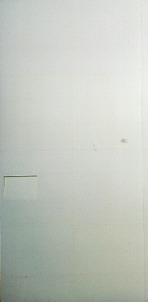 The
most widely used tearoom was the four and a half-mat room. The four and
a half mat room was minimized to two mats, one for the host and one for
the guest. Nakamura Toshinori, stated that he believed that the Taian
was
not minimizing the four and a half mat room, rather, it was influenced
from a different source. Nakamura Toshinori reconstructed the Taian at
the Daitokuji Temple. Taian’s influence is believed to be the "one-span
square" typically used in Korean folk houses. The evidence lies in
several
Korean influences present in the teahouse.
The
most widely used tearoom was the four and a half-mat room. The four and
a half mat room was minimized to two mats, one for the host and one for
the guest. Nakamura Toshinori, stated that he believed that the Taian
was
not minimizing the four and a half mat room, rather, it was influenced
from a different source. Nakamura Toshinori reconstructed the Taian at
the Daitokuji Temple. Taian’s influence is believed to be the "one-span
square" typically used in Korean folk houses. The evidence lies in
several
Korean influences present in the teahouse.
The most obvious is the theTaiko-busuma. Taiko-busuma is a paper-covered door without any frames. The frame-less doors are not indigenous to Japan; therefore, identifying it as a foreign influence. The alcove is also an example because of the plaster which covers the posts. Other examples are the nijiriguchi, and the use of pine. The use of pine is clearly a Korean influence because pine is too sappy and easily warped to be used in Japanese architecture. Pine was widely used in Korean country houses because it was abundant inexpensive. Taian, often believed to be a minimized four and a half mat room, could rather be an influence from Korea.